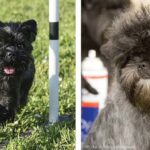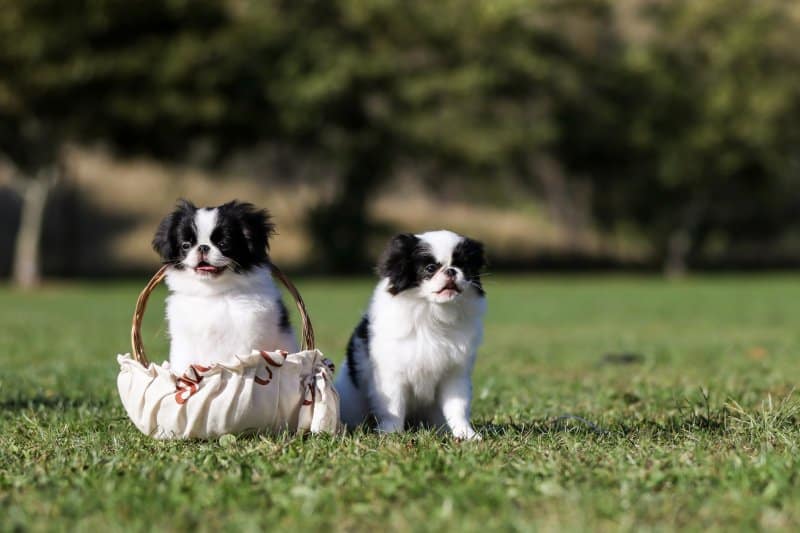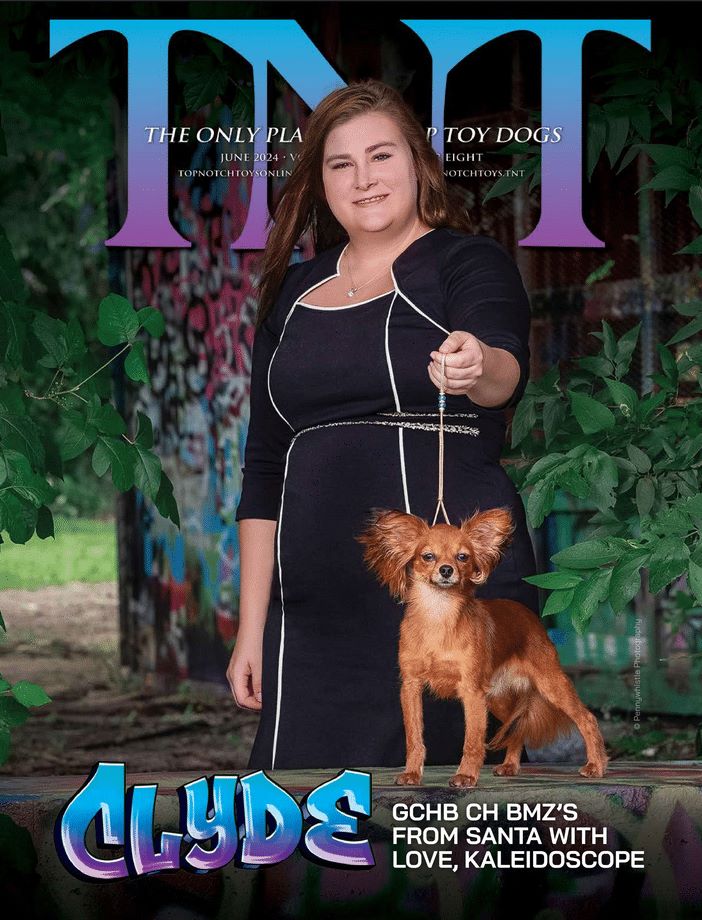Interview with Toy Group Breeder Dale Martenson
ShowSight columnist Allan Reznik sits down with Dale Martenson to discuss Japanese Chin, dog shows, and life in general.
1.) Where did you grow up?
Dale Martenson: I claim Rapid City, South Dakota, as my hometown, and most of my family still lives there. My wife Jane and I met in the summer of 1981 at a fun match, showing our Cocker Spaniels. We married two years later and left the cold winters of South Dakota far behind, heading to Texas.
2.) Do you come from a doggy family? And if not, how did the interest in breeding and showing begin?
Dale Martenson: While my family was not doggy, both my parents were from large dairy farms. They had a very real appreciation for quality stock, along with the commitment and dedication that go with it. At the age of 10, my first purebred dog was a Saint Bernard puppy, given to me as a gift. I eagerly agreed to my parents’ requirements, which included training for obedience that was offered by 4-H. The instructors were encouraging, and a CD, CDX and tracking title soon followed. While attending the dog shows, Cocker Spaniels caught my eye and I have been a spaniel lover ever since.
3.) Who were your mentors in the sport?
Dale Martenson: Competition and bringing your “A” game are both things I would credit to my father. “Preparation meeting opportunity resulting in success” was a life lesson that applied to everything. The skill of brutally honest evaluation and the pragmatic approach of, “It costs the same to feed the best-quality one as the least-quality one, so don’t compromise” I credit to Jane.
4.) The Japanese Chin of Touche are well known and highly successful. What breeding philosophies do you adhere to?
Dale Martenson: We are proponents of breeding a family line of dogs, based on generations of pick-of-litter bitches. At the point where your stock comes down from six generations of pick-of-litter mothers, the uniform quality and consistency are at their highest point. All aspects of production and occurrence of recessive genetic defects are things you can continue to manage. When the bitch line is strong it is amazing what great sires the stud dogs are! Our Ch. Touche’s Scintilla is a wonderful example, having produced 17 champions including multiple Specialty and all-breed Best in Show winners. [Editor’s note: see also the accompanying sidebar that contains breeding principles shared with Dale long ago by Cocker Spaniel breeder Alice Swiderski.]
5.) How many Chin do you typically keep at Touche? Tell us about your current facilities and how the dogs are maintained.
Dale Martenson: Generally we will keep around 20 to 25 breeding dogs at any one time, with about half usually males. Our bitches are spayed and placed at five years of age, with families that have had our puppies. We call it our “Place for Mom Program” and it has been a great success. Since several of our circle of breeders cannot keep a stud dog we don’t mind housing the key sires in our line. Our kennel has indoor/outdoor covered exercise yards and year-round climate control. It is where we groom, treadmill and train our show prospects.
6.) Who were/are some of your most significant dogs, both in the whelping box and in the show ring?
Dale Martenson: The Chin of Touche will always be proud of our roots in the great BIS Ch. Tennessee Tuxedo and his three all-breed BIS sons that were our starting point. Our current lineup is undoubtedly the finest we have ever had, with BIS Bravado, BIS Ricky, BIS Leo, BIS Gentleman, BIS William, and bitches that are every bit as nice.
7.) Please comment positively on your breed’s present condition and what trends might bear watching.
Dale Martenson: Chin are a non-evolving breed based on the seven dimensions of the Buddha. What was good then is good now. The condition of the breed is as good as its current caretakers. They are the hardest of all the Toy breeds to raise, with their exacting brachycephalic head type, single-digit weight and demanding, symmetrical particolor markings.
Appreciation by the judges for these “canine dinosaurs” is at an all-time high, and for this we are extremely pleased.
There is some clarification needed with respect to the breed’s hallmark eyes and their perfectly round, dark, lustrous appearance. The scleral tissue on the inside corners CAN be white when the dog is free standing, and give an alert, astonished appearance. However, this has been taken by some to mean the more, the better, and we have some vision impairment cropping up, with stark, harsh-looking eyes being promoted and rewarded. Look in the eyes for pigment, as that is not a fault; make sure the pupils are focused straight ahead; and check expression in the handler’s arms or on the floor, not on the table.
8.) The sport has changed greatly since you began as a breeder-exhibitor. What are your thoughts on the state of the fancy and the declining number of breeders?
Dale Martenson: Honestly, the Parent Club system is not open nor inclusive to all fanciers, and seemingly has no interest in becoming so.
It certainly appears as if the show world doesn’t welcome more competition. Perhaps control is easier with smaller groups involved.
Currently there is peer pressure on breeders to limit registrations and to be secretive regarding their breeding practices. It is easier for newcomers to obtain breeding stock via importation.
AKC is creating more levels of awards, and the National Owner-Handled Series promotes participation, but none of that is actually making more breeders.
If any individual in good standing with the AKC could join any club and breeding were truly encouraged perhaps the sport would draw more people in.
9.) What are your plans for Touche in the next decade or two?
Dale Martenson: When you breed your dogs they never truly die and I hope we can keep alive the traits of this magical breed as long as we can. At times we have considered judging to help promote the purposely bred purebred dog to new people and offer a breeder’s perspective and encouragement. With more than 400 homebred champions it’s still very exciting to watch and see the next game-changing superstar in the making.
10.) Finally, tell us a little about Dale outside of dogs… your profession, your hobbies.
Dale Martenson: We sold our grooming and boarding business six years ago and moved to the lake on a small, 50-acre farm. Chickens, cattle, cats and, of course, dogs seem to fill every day. Last October Jane bought me a greenhouse for my birthday and that has been a new obsession with so many great things to learn.
I still try to attend a show or two every month. Now that I’m retired from the pet care industry, it seems somehow there is less time and even more to do!
Thank you for inviting me to share my thoughts about a lifetime of appreciation for the purebred dog.
Words of wisdom, passed along by Dale Martenson.
Thirty-five years ago, the great Cocker Spaniel breeder Alice Swiderski shared these breeding principles with me. We have found them to be absolutely true.
“If you don’t know where you’re going, you’ll probably never get there.”
1. Puppies tend to resemble their total pedigree more than their immediate sire and dam. The more intensely bred line will dominate.
2. It is virtually impossible to upgrade quality through one outcrossing. If you want your line to resemble a particularly outstanding dog or bitch, it is only after several outcrosses back (through sons and daughters) that his or her qualities will appear regularly in your line.
3. The best litters are produced through half-brother/sister breedings (or grandparent to grandchild), doubling up on the particular dog or bitch you admire, and outcrossing on the dam.
4. Outcrossing must be done every few generations but only to keep the vigor of the line. The more outcrossing you have, the less chance you have of coming up with uniform quality.
5. Outcrosses are usually a big disappointment. If the outcross is sound and free of major faults, it should be kept and bred back to the individual or line you wish to copy.
6. Everything is inherited… type, personality, markings and showmanship. If you have a dog or bitch that carries some trait or fault you feel should be stamped out and you can’t stand the idea of having a kennel full of the same, DON’T BREED THAT ONE!
7. Undesirable qualities are never truly bred out… they are merely hidden or buried. They will rear their ugly heads when least expected, to haunt you over and over again for years to come. You will wonder why you ever took that foolish step!
8. All dogs carry a recessive for nearly any fault you can name. Remember, Chin have been purebred for hundreds of years. Somewhere in their background is a dog or bitch that carried that fault. It might take generations for it to appear again but it is there!
9. There is no perfect dog; no perfect breeding. Mother Nature has a tight-fisted way of doling out improvements and changes.
10. How, then, can we move ahead? I have found that, if I let my conscience be my guide, use only the individuals I feel worthy of duplication, keep and/or sell only the ones I wouldn’t mind having in my kennel, very slowly the improvement will show up. If a dog or bitch does not prove to be an asset to my breeding program, regardless of how much I spent showing and finishing the dog, I would rather see it go into a pet home than sell it to some small kennel as breeding stock.
There is no quick and easy road to success. All experienced people in dogs can recall the disappointments and discouragement they have faced to get where they are today.
Touche Japanese Chin | Dale Martenson
From the March 2019 Issue of ShowSight.









